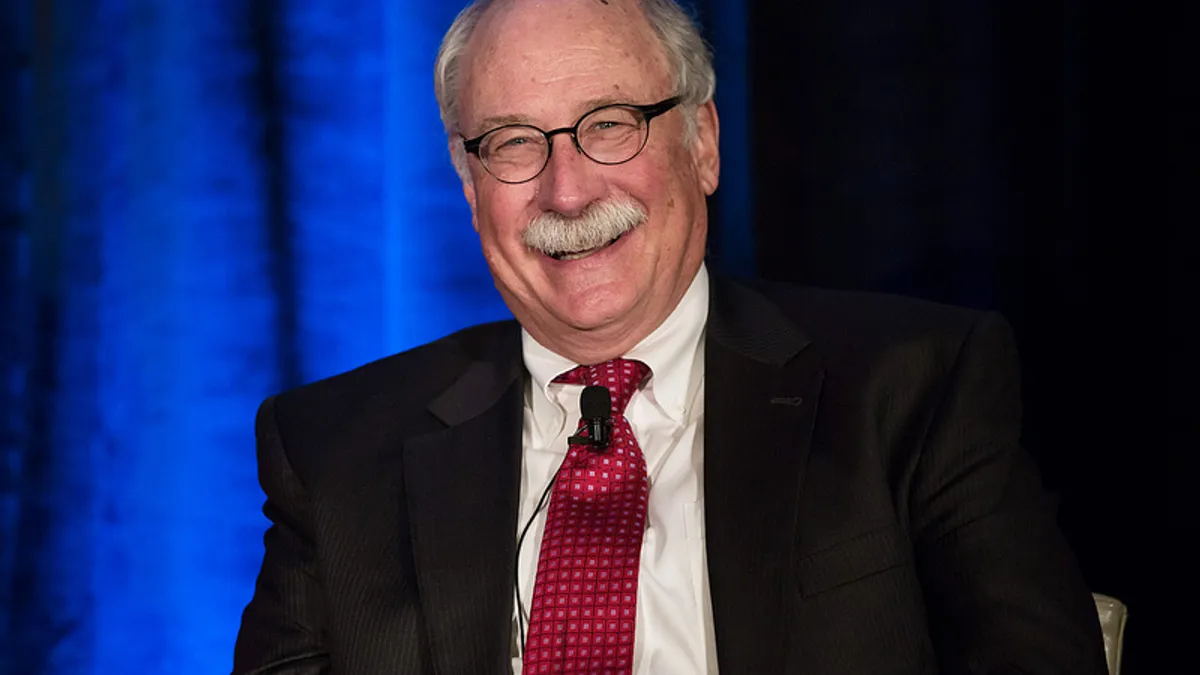
What came first—the chicken or the egg?
While there's a lot of talk in the utility industry about business model changes, sometimes we forget that utilities only operate within bounds set by regulators. So what needs to change first?
If utilities are to change in any serious way, Ron Binz, former chairman of the Colorado Public Utilities Commission and President Obama's defeated pick to lead the Federal Energy Regulatory Commission, posited, then regulators will have to first enable them to change.
Speaking at the National Summit on Integrating Energy Efficiency and Smart Grid in Washington, D.C. on Tuesday, Binz spoke about the regulatory challenges facing the U.S. utility industry, from regulatory models of the future to the looming rule that will overhaul U.S. utility regulation.
Here are three predictions he made:
1. REGULATORY MODELS BEFORE BUSINESS MODELS
"It’s very clear that U.S. regulation needs an overhaul in a very fundamental way," Ron Binz told the audience. In many places, the U.S. has rate of return regulation for the wires and, in some cases, for the generation. "That served us very well in the 50s, 60s, 70s, maybe parts of the 80s," Binz said, "but from when we got to the 90s, that [was] no longer really efficacious."
"Regulation today does not reward utilities for doing what society wants them to do," Binz said. Utility revenue is typically tied to electricity sales, which does nothing to incentivize things like energy efficiency. Seeing as utilities respond to incentives provided by regulation, Binz argued, "the entry point into the new utilities' business models is actually regulation."
Binz says he would like to revise U.S. utility regulation and "start moving to a model of what's often called performance-based regulation." The gist of it is "you get the utilities a trajectory of prices—this is what your prices can be for the next six years, knock yourselves out," Binz explained. "Do whatever you can do to operate within that price structure, and if your rate of return goes to 18%—congratulations."
2. DYNAMIC PRICING WILL GIVE RISE TO THE RETAIL SMART GRID
There is "no market" today for residential and small commercial smart grid, Binz told the audience. "There's really not much to work with if you're a vendor."
The largest barrier, he explained, is electricity pricing.
"Making time of use voluntary is never going to work. We’ve seen this for decades. You get a select few who win big, but you don’t move lots of kilowatt-hours. That’s what's holding back what I call the retail smart grid," Binz argued.
"You can have all the smart meters in the world," he said, "but without some market edge in there, some point of arbitrage, you’re not going to see the vendors show up."
3. NEW EPA RULES WILL TRANSFORM U.S. UTILITY REGULATION
The coming EPA regulations for existing power plants are the "great underestimated change that is about to engulf U.S. regulation," Ron Binz warned the audience.
There is no market solution to implementing this standard, Binz said. "The cost is on the manufacturer and the benefits go to society" because the standard is addressing something "which is not priced in electricity."
"That's the problem," he continued. "And that's about to change."
"You need to pay attention to the alphanumeric combination 1.11.D.," Binz explained. "That’s a section of the Clean Air Act under which the EPA is about to promulgate rules for existing power plants' carbon dioxide emissions."
"What this is going to do overnight" is obligate utilities to "reduce the intensity of greenhouse gas emissions per kilowatt-hours," Binz said. That's suddenly going to make energy efficiency and demand response a "least cost solution" and "compliance mechanism—not just because it feels good or your regulator told you to do it."
Putting the cost of carbon into the electricity price, Binz predicted, will boost the relative value of energy efficiency, demand response and renewable energy.
Enjoyed what you read? You may also want to read Utility Dive's look at FERC chairman Wellinghoff's explanation of why utilities must adapt or die.















